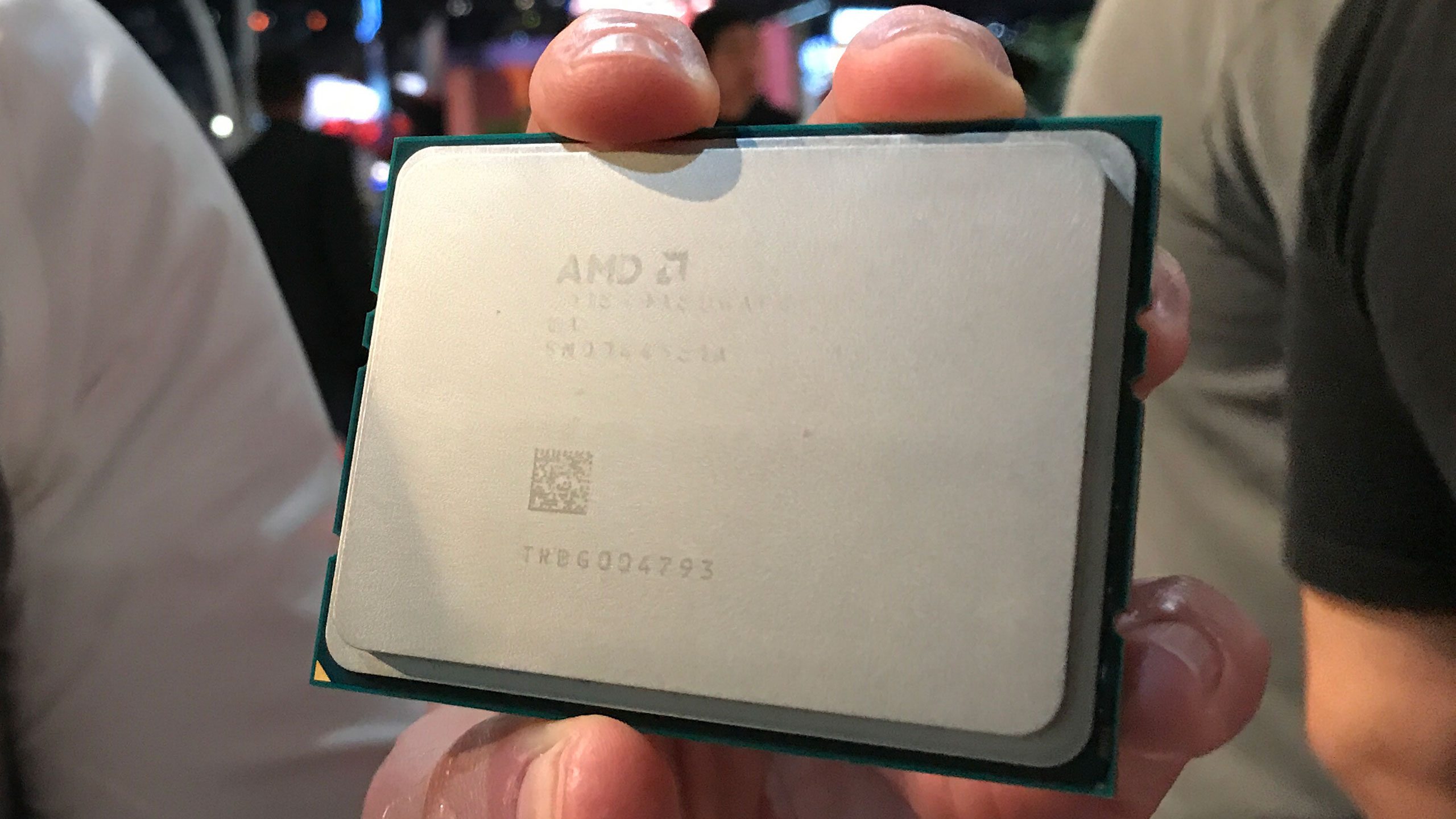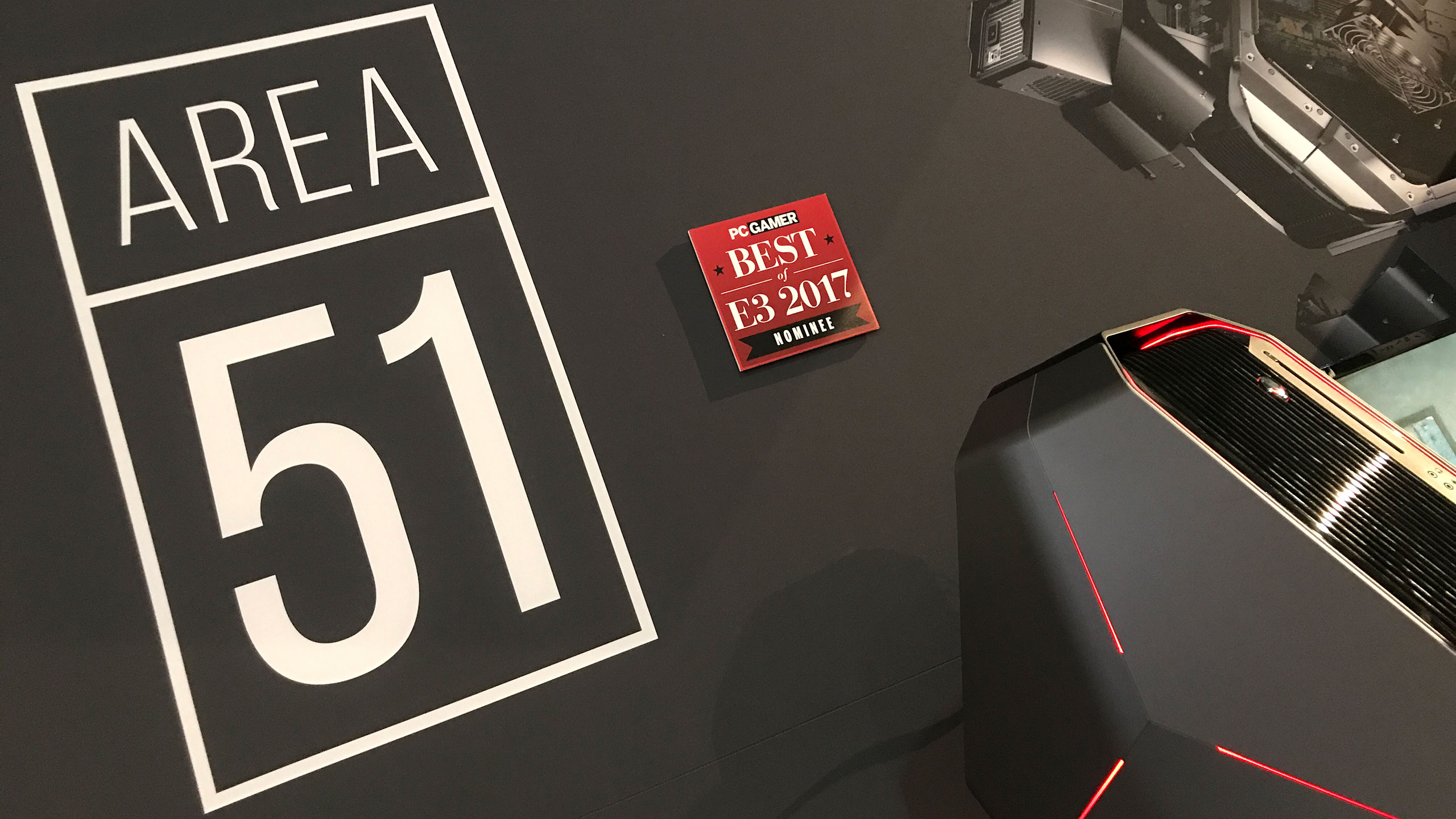Threadripper was the coolest new PC hardware we saw at E3
Proof that bigger is better.
E3 is a show that caters almost exclusively to the video gaming crowd—including console games. We've covered the most impressive games and announcements from E3 already, but there was at least one cool piece of PC hardware on the show floor. And it's the biggest, baddest, and gnarliest sounding hardware around: Threadripper. Doom Guy would be proud.
Dell and Alienware have secured exclusive first availability rights for AMD's Ryzen Threadripper, at least if you want a prebuilt PC. (DIY builders can still roll their own.) Tuan had a chance to check out the Alienware system in person, and more importantly, he got to see the mammoth chip. His fingers are still recovering from the workout of picking the thing up. We don't have performance results, pricing, or even a release date, but if you want a palm-sized CPU package to impress your friends, Threadripper is the way to go. But there are other reasons we love Threadripper, specifically the way AMD is taking the battle to Intel this round.
Ryzen 5 and 7 CPUs might not win every benchmark, but factor in the cost and the number of cores/threads you get and Ryzen is easily the most exciting thing to happen to the CPU market in the past five years. The Ryzen 7 1700 for example gives you 8-cores/16-threads starting at $300—including a decent cooler—and can hit 3.8-4.0GHz with overclocking. Intel's closest competition is the Core i7-7700K ($325, but without a cooler), which has 4-cores/8-threads clocked at up to 4.5GHz stock, and 5.0GHz with overclocking. Alternatively, the new Core i7-7800X will be available next week, with 6-cores/12-threads, up to 4.5GHz clockspeeds, and a price of $390—plus the need for a more expensive motherboard.
For gaming purposes, Intel can still beat AMD, particularly if you're running the fastest GPUs (ie, GTX 1080 or 1080 Ti), but at 1440p the difference is relatively small. More importantly, in non-gaming workloads Ryzen's extra cores are extremely potent. In testing, Ryzen 1700 is around 40 percent faster than the i7-7700K for multi-threaded workloads.
Threadripper is set to carry the battle into the enthusiast hardware space, an arena AMD hasn't really visited since the Phenom II days, and the competition is sorely needed. Look no further than the Broadwell-E i7-6950X, which bumped the price of the top Intel 'enthusiast' CPU from $999 to $1,723. 10-core Skylake-X i7-7900X meanwhile will be back at $999, thanks in no small part to a revitalized AMD. But it's not just about core counts and cost.
One of the biggest complaints I have with Skylake-X is that Intel is moving the 44 PCIe lane version to the $999 slot—anything less, and you only get 28 PCIe lanes (or 16 lanes on the 4-core parts). In contrast, Threadripper will deliver 60 PCIe lanes on all models. The expectation is that we'll see a 16-core/32-thread part for under $1,000, and parts with 10-cores/20-threads could land closer to $500. That's roughly twice the number of cores as Intel's processors at a similar price, or a similar number of cores at a significantly lower price.
I don't really need 16-cores/32-threads, because the only times where I can even push 8-core processors (outside of running benchmarks) usually consist of tasks where I just walk away for an hour and come back to collect the result—like a newly generated video. But even if I don't need the extra cores, I want them. Because opening up Task Manager to see 32 little boxes of processing goodness is cool. And just because I don't need the extra cores today doesn't mean they won't be useful in a few years.
Keep up to date with the most important stories and the best deals, as picked by the PC Gamer team.
So thanks AMD, and thanks Alienware, for helping to bring competition into the high performance desktop PC space. You win our award for the best new hardware at E3 2017. Now just get me a chip, motherboard, launch date, and prices and I'll be set. Oh, and an RX Vega card, thanks. Xbox One X? Yawn. I want real processor cores, and I want 16 of them.
Jarred's love of computers dates back to the dark ages when his dad brought home a DOS 2.3 PC and he left his C-64 behind. He eventually built his first custom PC in 1990 with a 286 12MHz, only to discover it was already woefully outdated when Wing Commander was released a few months later. He holds a BS in Computer Science from Brigham Young University and has been working as a tech journalist since 2004, writing for AnandTech, Maximum PC, and PC Gamer. From the first S3 Virge '3D decelerators' to today's GPUs, Jarred keeps up with all the latest graphics trends and is the one to ask about game performance.




